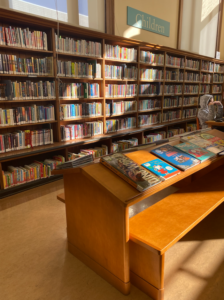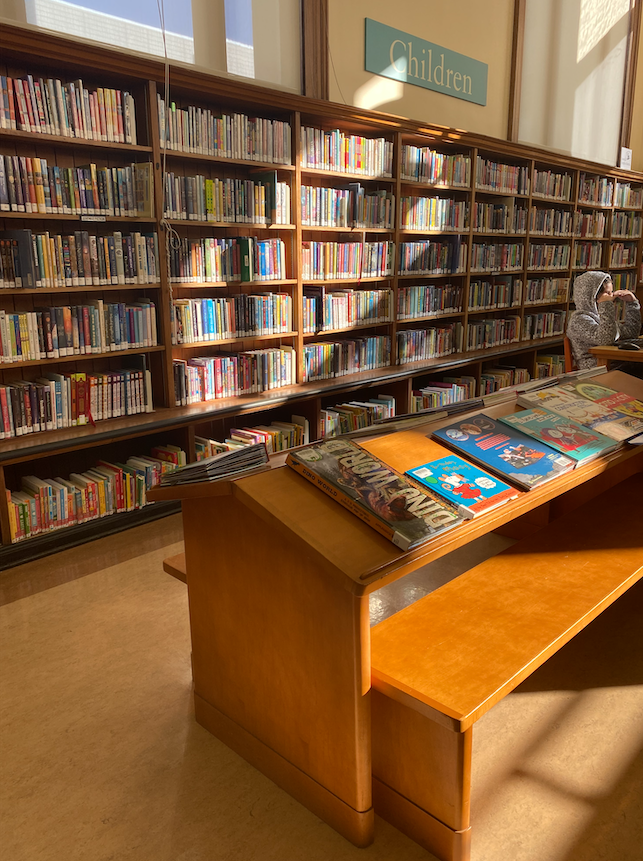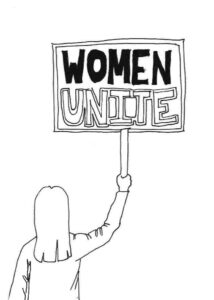Libraries in San Francisco have been slowly reopening, once again making their rich programming and essential resources accessible to all. Children, seniors and the houseless have been especially impacted by physical libraries being closed, even though curbside pick-up was available.
While businesses, specific schools and public areas were among the first to reopen, San Francisco Public Libraries (SFPL) were some of the last, remaining closed during the majority of 2020 and the beginning of 2021. The Main Library located in Civic Center returned to its pre-pandemic hours on September 7 — almost three months later than public school reopenings.

photo by Kiana Sezawar Keshavarz
Although libraries are generally associated with accessing books and academic media, public libraries also offer an array of resources free to anyone who wishes to use them, as long as they possess a library card.
Obtaining a library card in San Francisco requires nothing more than giving your name, some form of ID, proof of SF residency and a phone number. This process can be done entirely on paper at an SFPL site, making it accessible to those with a wide range of situational obstacles.
Once your card is minted, you not only have access to thousands of free books in multiple languages, audiobooks and movies, but also free printers, copiers, internet access, desktops, rentable laptops, textbooks, translation services, ASL services, language learning programs, employment assistance and free museum passes.
Chieko Wealand, a librarian at both Ingleside and Marina SFPL branches offered her first-hand experience with such library internet users. She said, “People who want to use the computers, we see them daily, especially for printing things out. We have free printing up to ten dollars worth of printing a day.”
Referencing how the pandemic has affected how much time people spend at libraries, Wealand said, “Most of the people we see hold something online and come to pick them up. They don’t stick around. People who stay a long time are mostly people who need computer access,” she said.
Eric Shapiro, a member of the Visitacion Valley library staff, explained how libraries immediately saw users relying on their resources once opening. He said, “When we first opened, there were a lot of forms being filled out online. There were a lot of people applying for EDD and other government forms.”
Libraries also provide a safe space, drinking water and bathrooms for many at-risk people. You do not need a library card to enter into a library’s physical sheltered place, use the water fountains and bathrooms and enjoy its community programs — these are all offered to the general public.
Jaime Wong, Public Relations Officer of SFPL, referred to these programs, saying, “We are a safe space for those who need free Internet access. And we are the first library system in the country to have an embedded social worker and a dedicated support team who can provide a bridge to people who need social services.”
Anita Shinall, a librarian at the Park Branch library in the Haight-Ashbury, also offered a perspective on how the closures affected houseless people and those with situational obstacles. She said, “People who don’t have internet in their home and people who don’t have a home were probably the most impacted by us closing.”
In pre-Covid times, SF libraries have run summer food distribution programs for enrolled SFUSD students, as well as summer reading programs and community events for people of all ages, targeting toddlers, youth, teens, adults and the elderly. Wong added, “In the summer of 2021, we also partnered with other city departments and the SF Unified School District to give away book bundles and free books and toys at hotels serving families experiencing homelessness.”
Most of these programs are not scheduled to restart until February or March of 2022. Wealand added that the Ingleside programs have been challenging to restart: “Almost all programs have remained virtual.. because smaller children can’t be vaccinated. The Main Library did a few in-person programs, but the attendance wasn’t so great. We’re mostly doing Zoom programs — people don’t feel that comfortable coming in person,” she said.
These closures have also had a significant effect on children and the elderly, who often use libraries to form communities and connect with each other.
“We’re still getting a lot of requests for storytimes. It’s been really important to parents to expose their children to books and the social interaction storytimes offer. Those will be restarting in early 2022,” said Rebecca Gonzales, branch manager of the Visitacion Valley branch library.
She elaborated on how frequenters returned to libraries after their reopenings and spoke to her previous experience at the Bernal branch library.
“When we first re-opened at Bernal, a majority of the people who came in were seniors, these were people who weren’t necessarily comfortable using e-books and other online materials. We’ve opened our program rooms for community groups. There was a senior writing group that meets at the Bernal Heights branch and a senior watercolor group. Each branch has its own local community groups,” she said.
While library closures had a heavy impact on those who rely on them for a multitude of services, many branches resumed some services once their staff could support it.
Wong spoke to the process of re-opening: “It was a gradual process of teamwork — much of our staff was deployed as city Disaster Service Workers during the height of the pandemic — staffing local food banks or working as contact tracers were among many other incredible ways to help out.”
Shinall said, “A lot of our staff got pulled to work as Disaster Service Workers. I did that for five and a half months instead of library work, so it took our library a lot longer to re-open because of that. Other people were doing other things for up to a year.”
Returning to checking out novels that had been read by who knows how many other eager readers on familiar matte black acrylic desktops, Shinall observed, “We really felt the lack of public space for people to be, which is at the heart of libraries. Libraries are important for everybody, but the people who often need them the most are people who don’t have access to information sources in their homes… perhaps, people who don’t have homes.”
The process of reopening highlighted the importance of library systems, emphasizing librarians as leaders and essential community members. Yet, it was the closings that underscored them as a physical place of community, bringing all members of society together, bonded if not by resource then by setting.






